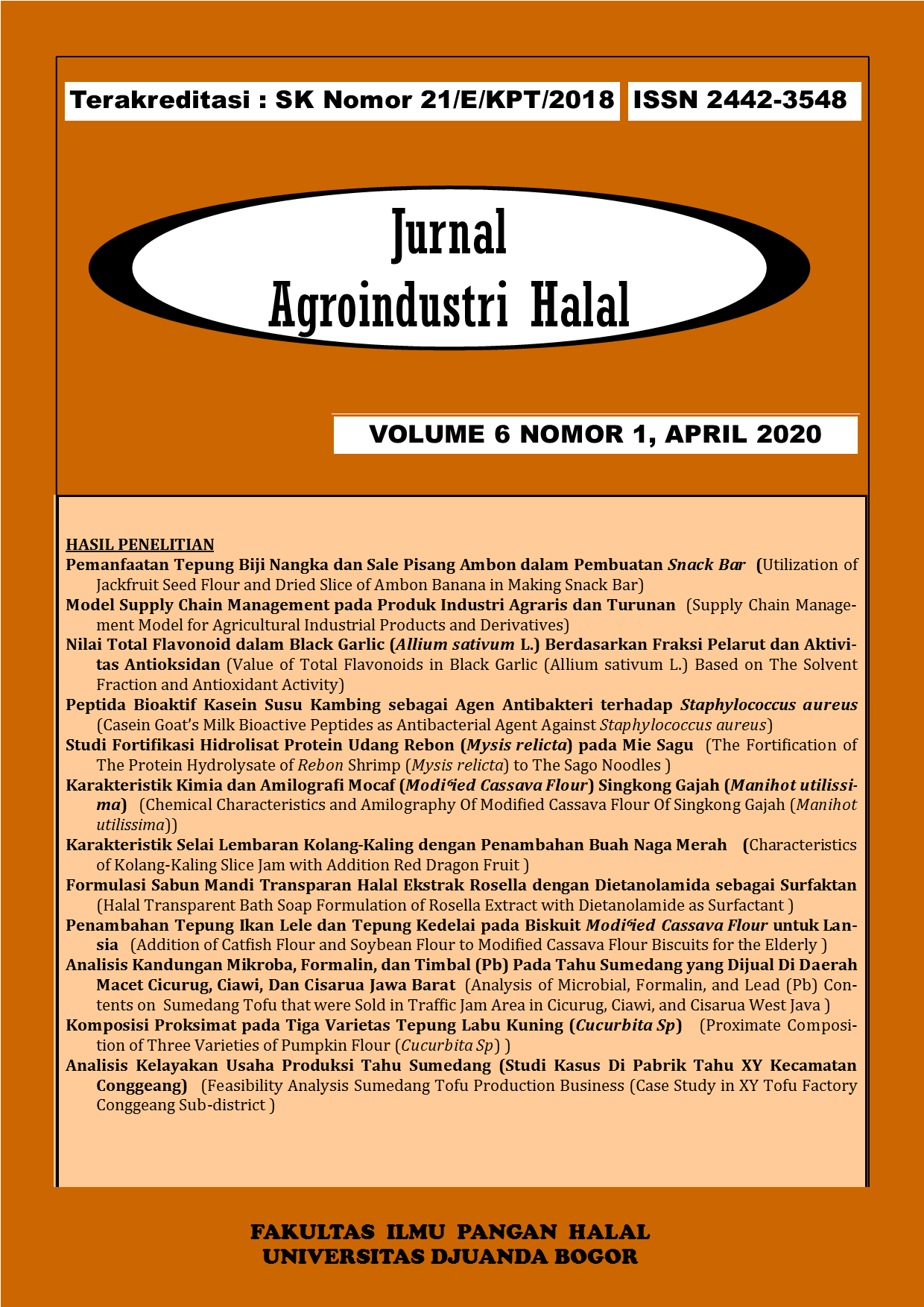Studi fortifikasi hidrolisat protein udang rebon (mysis relicta) pada mie sagu
Main Article Content
Abstract
The study aimed to determine the effect of rebon shirmp (mysis relicta) protein hydrolisate fortification to the sago noodles and to observe the characteristics of the sago noodles produced. The research was carried on in February – April 2019 in the Laboratory of Fish Processing Technology, Integrated Laboratories, and the Fisheries and Marine Chemistry Laboratories at the Universitas Riau. The method used was the experimental method, designedas a non-factorial complete randomized design. The treatment conducted was addingof rebon shrimp protein hydrolysate at 4 level concentrations (0%, 5%, 10% dan 15%). The variables assessed were the quality of organoleptic (appearance, texture, odor, flavor) and the proximate composition. The results showed that the proteinhydrolysate of rebon shrimp at concentration of 15% was the best treatment and in accordance to the quality standards of dried noodles (SNI 01-2974-1996), indicated bythe highest organoleptic qualityof the dried noodles produced, including: the appearance that was brown, less attractive, whole, less neat; the texture that was dry and compact; the aroma that was quite fragrant, spesific rebon shrimp; and the taste that was quite tasty and shrimp flavored. The proximate composition ofthe best product was presented by the content of moisture, ash, fat, protein, and carbohydrate at 7.55%,1.02%, 0.17%, 16.76%, and 74.49%, respectively.
Keywords: Hydrolysate protein, rebon shrimp, sago noodlesArticle Details
Authors who publish with Jurnal Agroindustri Halal agree to the following terms:
- Authors retain copyright and grant the journal right of first publication with the work simultaneously licensed under a Creative Commons Attribution 4.0 International License that allows others to share the work with an acknowledgement of the work's authorship and initial publication in Jurnal Agroindustri Halal.
- Authors are able to enter into separate, additional contractual arrangements for the non-exclusive distribution of the journal's published version of the work (e.g., post it to an institutional repository or publish it in a book), with an acknowledgement of its initial publication in Jurnal Agroindustri Halal.
- Authors are permitted and encouraged to post their work online (e.g., in institutional repositories or on their website) prior to and during the submission process, as it can lead to productive exchanges, as well as earlier and greater citation of published work
